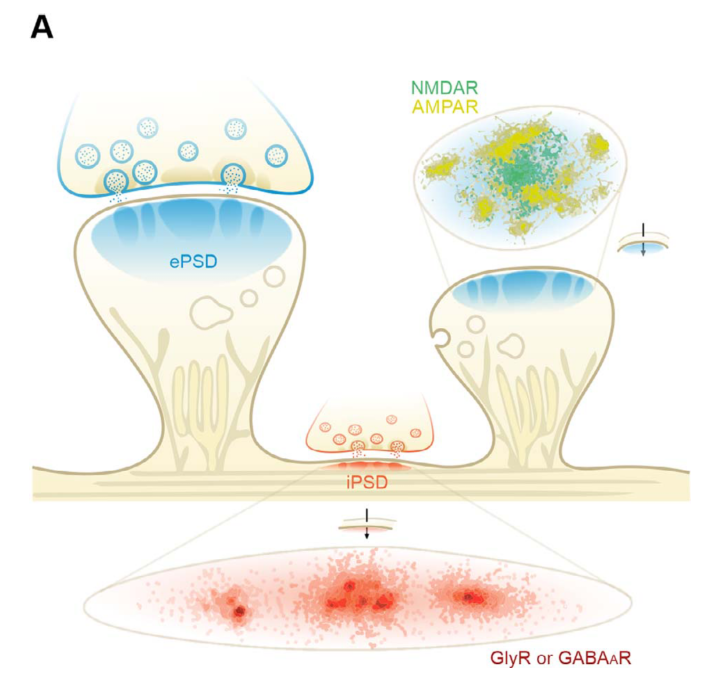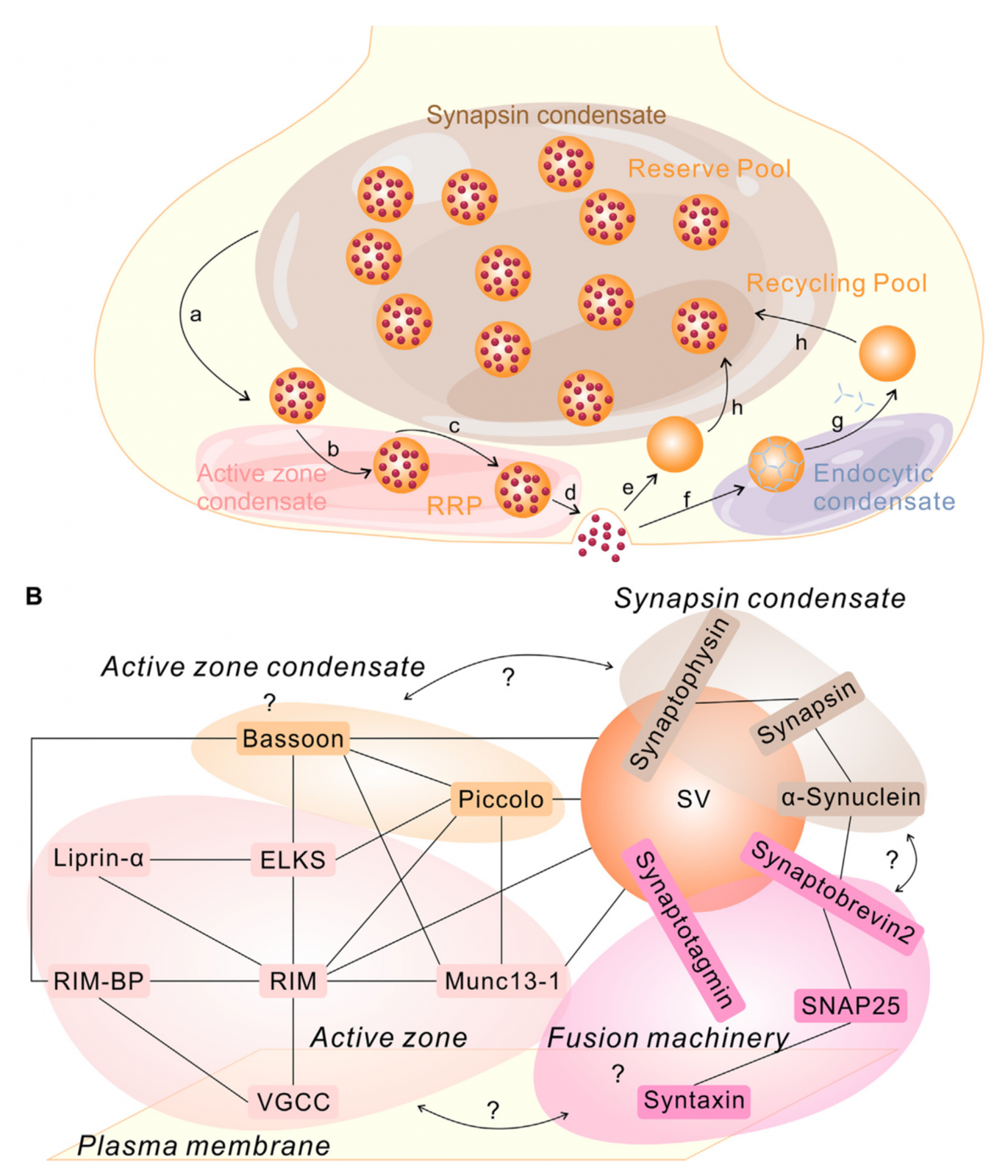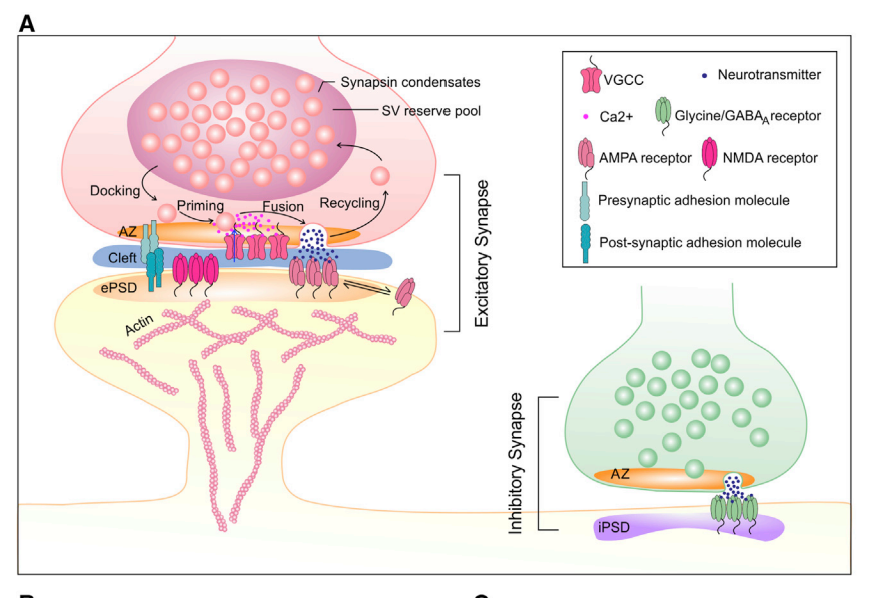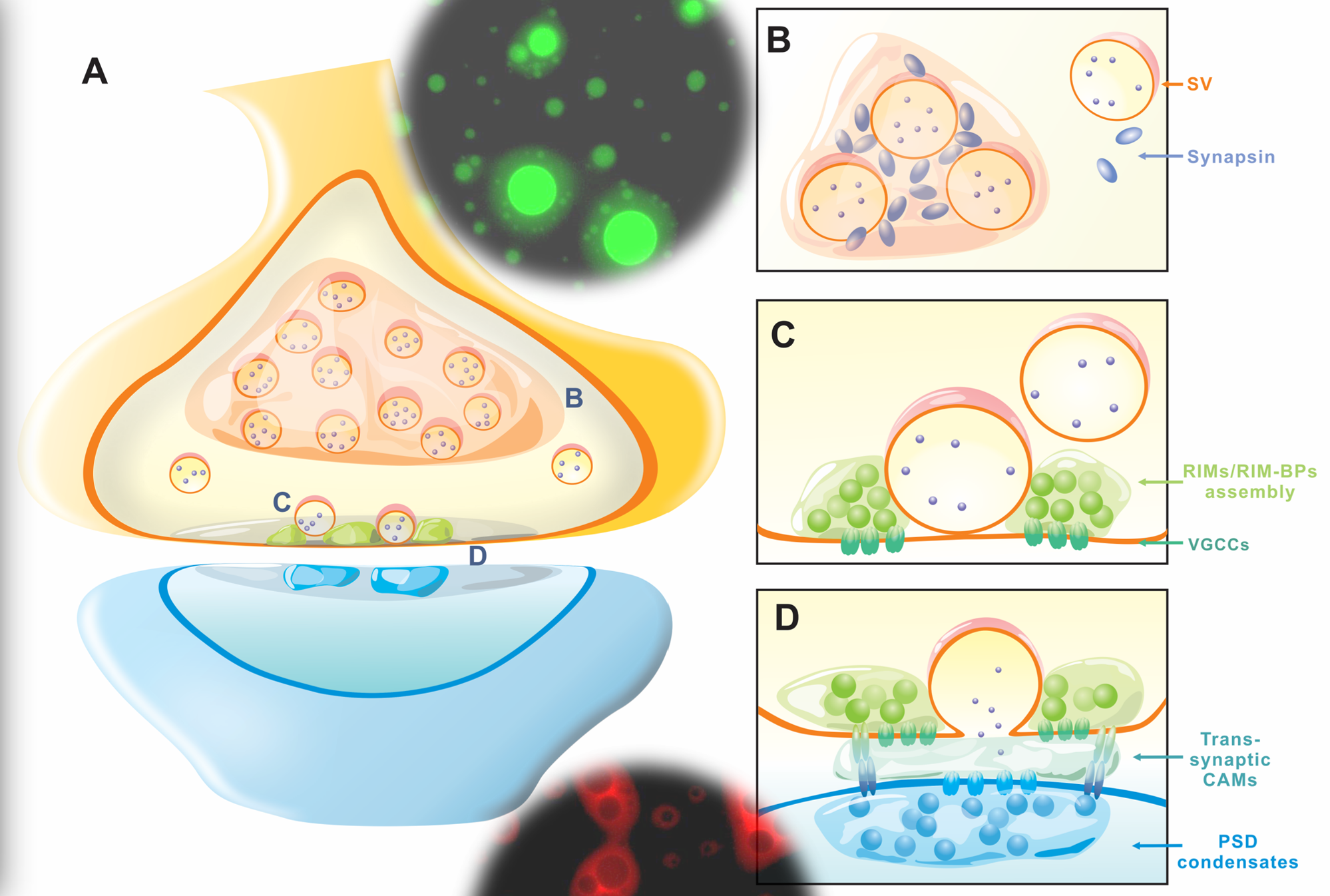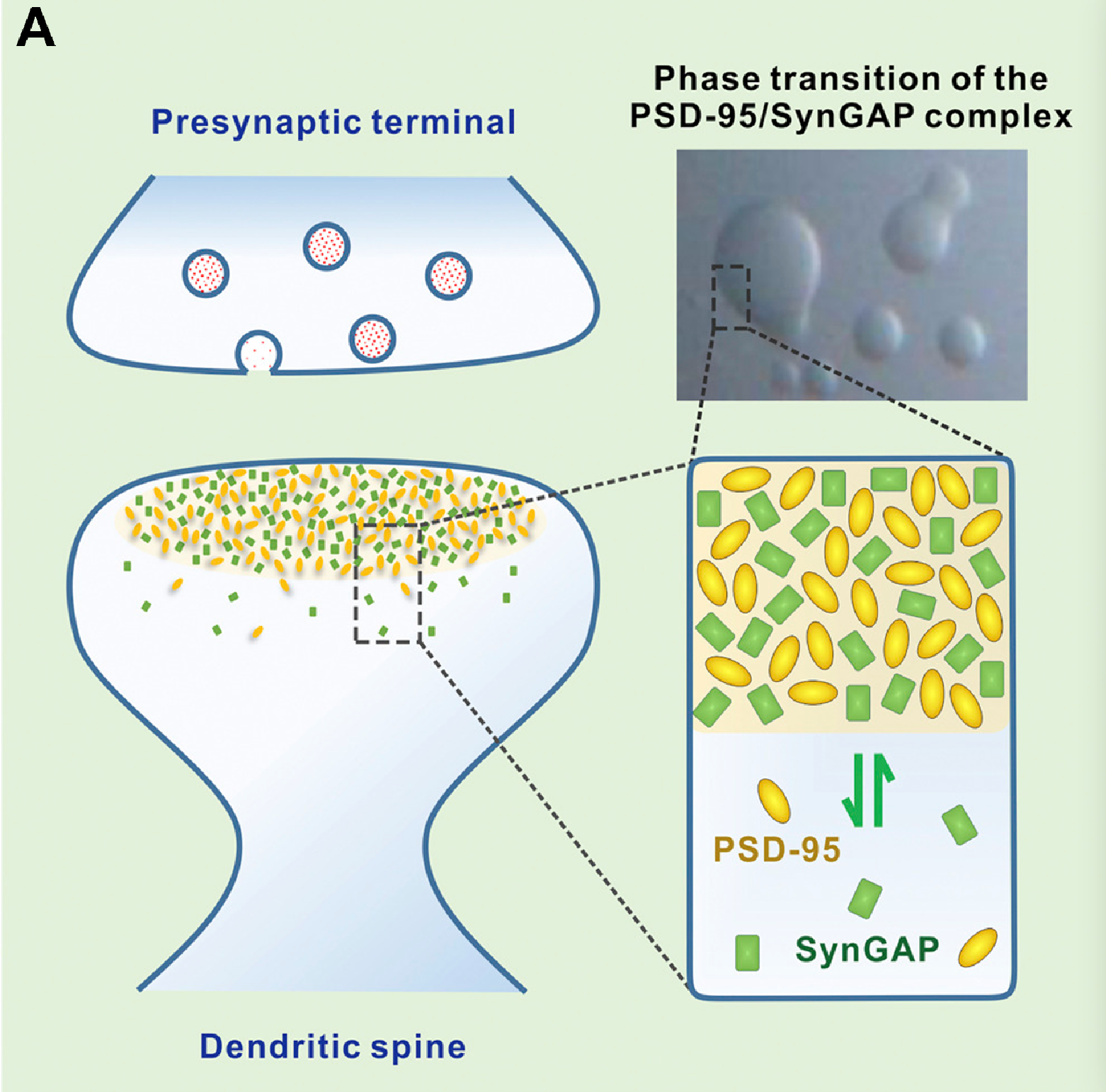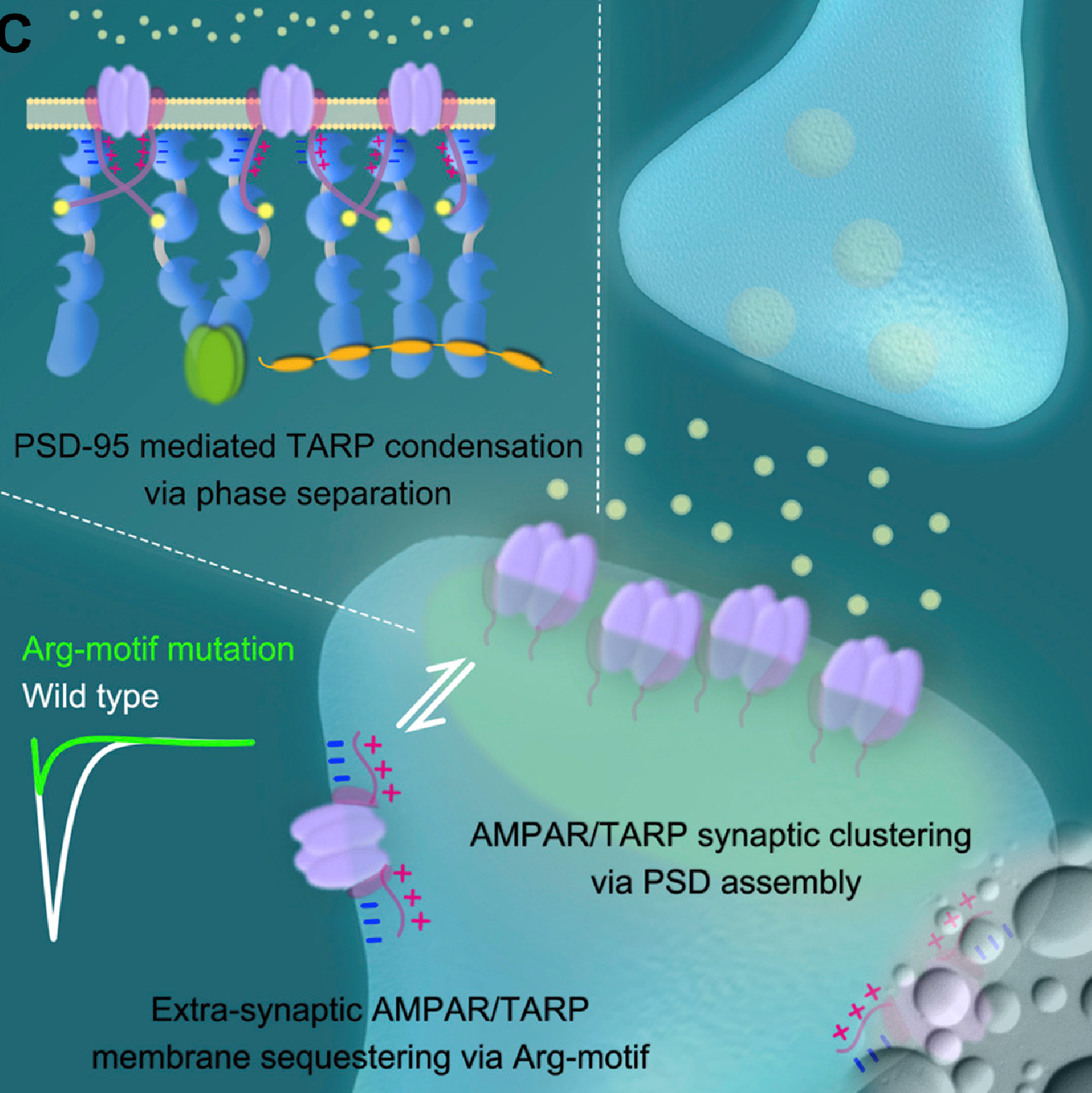Chen, X., Wu, X., Wu, H., & Zhang, M. (2020). Nature neuroscience, 23(3), 301-310.
Emerging evidence indicates that liquid–liquid phase separation, the formation of a condensed molecular assembly within another diluted aqueous solution, is a means for cells to organize highly condensed biological assemblies (also known as biological condensates or membraneless compartments) with very broad functions and regulatory properties in different subcellular regions. Molecular machineries dictating synaptic transmissions in both presynaptic boutons and postsynaptic densities of neuronal synapses may be such biological condensates. Here we review recent developments showing how phase separation can build dense synaptic molecular clusters, highlight unique features of such condensed clusters in the context of synaptic development and signaling, discuss how aberrant phase-separation-mediated synaptic assembly formation may contribute to dysfunctional signaling in psychiatric disorders, and present some challenges and opportunities of phase separation in synaptic biology.
Bai, G., & Zhang, M. (2022). Oxford Open Neuroscience, 1
Molecular mechanisms underlying subsynaptic nanodomain formation for both the iPSD and ePSD are still poorly understood.Whether the formation of subsynaptic nanodomains in the iPSD requires other proteins and if yes how these proteins modulate the iPSD nanodomain formation are interesting topics for future studies.
Wu X, Qiu H, Zhang M. [J]. Journal of Molecular Biology, 2023, 435(1): 167629.
Action potential-induced neurotransmitter release in presynaptic boutons involves coordinated actions of a large list of proteins that are associated directly or indirectly with membrane structures including synaptic vesicles and plasma membranes. These proteins are often highly abundant in different synaptic bouton sub-compartments, and they rarely act alone. Instead, these proteins interact with each other forming intricate and distinct molecular complexes. Many of these complexes form condensed clusters on membrane surfaces. This review summarizes findings in recent years showing that many of presynaptic protein complex assemblies are formed via phase separation. These protein condensates extensively interact with lipid membranes via distinct modes, forming various mesoscale structures by different mode of organizations between membraneless condensates and membranous organelles. We discuss that such mesoscale interactions could have deep implications on mobilization, exocytosis, and retrieval of synaptic vesicles.
Wu, X., Cai, Q., Feng, Z., & Zhang, M. (2020). Developmental cell, 55(1), 18-29.
Formation of biomolecular condensates that are not enclosed by membranes via liquid-liquid phase separation (LLPS) is a general strategy that cells adopt to organize membraneless subcellular compartments for diverse functions. Neurons are highly polarized with elaborate branching and functional compartmentalization of their neurites, thus, raising additional demand for the proper subcellular localization of both membraneless and membrane-based organelles. Recent studies have provided evidence that several protein assemblies involved in the establishment of neuronal stem cell (NSC) polarity and in the asymmetric division of NSCs form distinct molecular condensates via LLPS. In synapses of adult neurons, molecular apparatuses controlling presynaptic neurotransmitter release and postsynaptic signaling transmission are also likely formed via LLPS. These molecular condensates, though not enclosed by lipid bilayers, directly associate with plasma membranes or membrane-based organelles, indicating that direct communication between membraneless and membrane-based organelles is a common theme in neurons and other types of cells.



